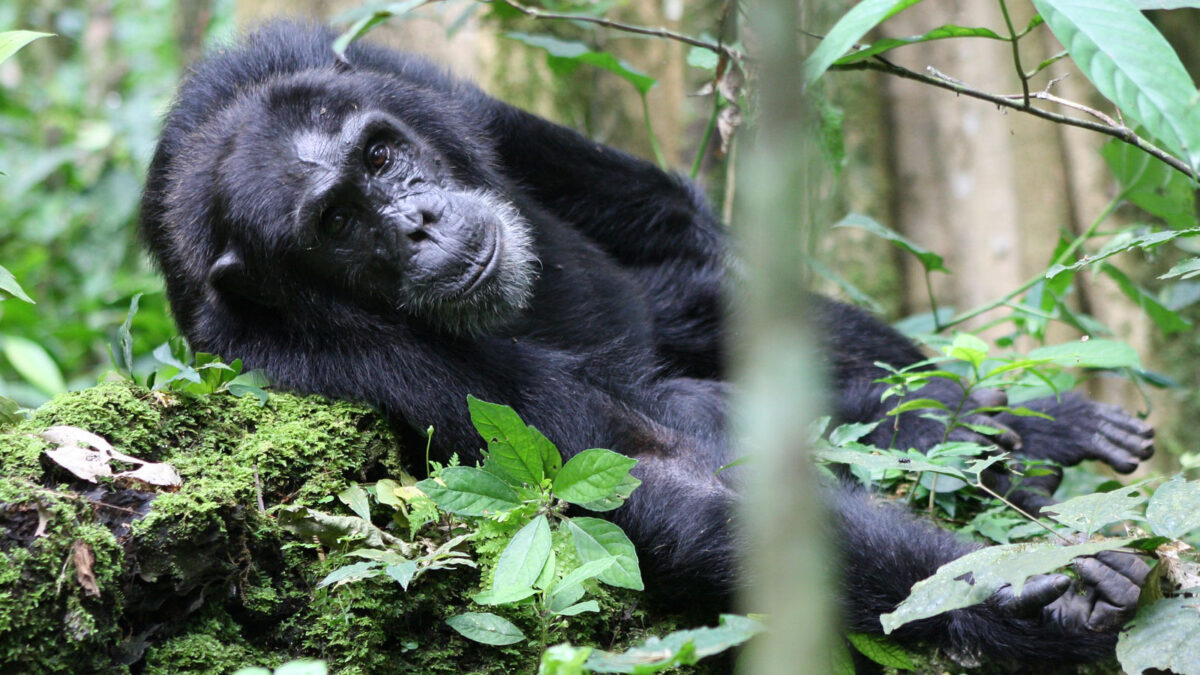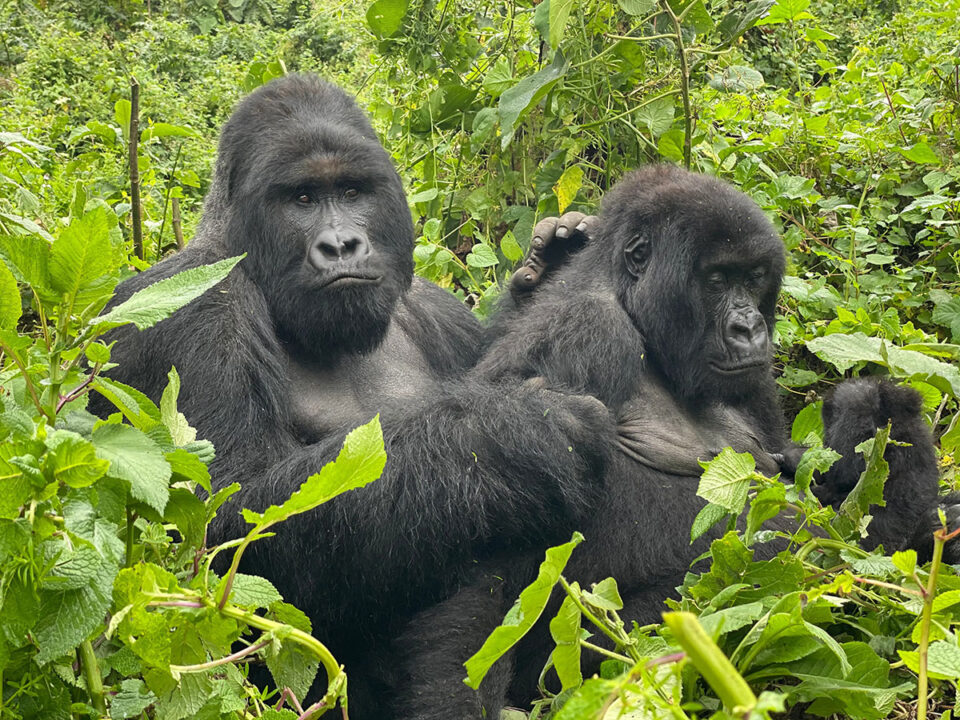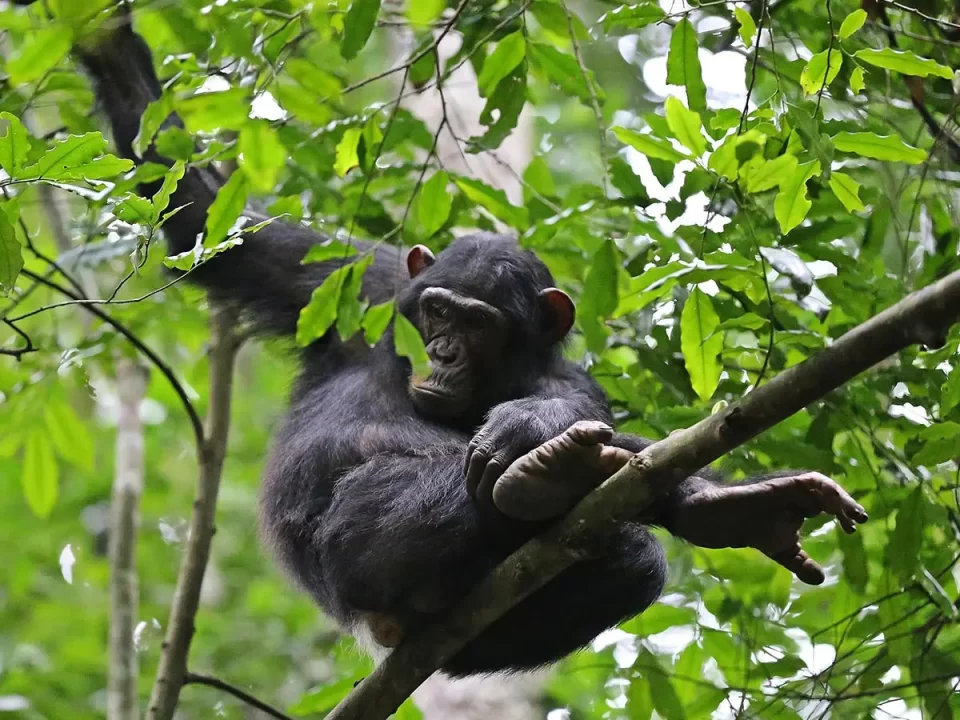Uganda Chimpanzee Trekking

Banded Mongoose Tracking and Filming
September 3, 2023
How to Get to Murchison falls National park
September 3, 2023Exploring the Marvels of Uganda Chimpanzee Trekking in Kibale Forest National Park
Unveiling Uganda’s Lush Chimpanzee Sanctuaries
Uganda‘s strategic location along the western arm of the East African Rift Valley, coupled with its ideal climate, has nurtured the growth of extensive rainforests that are often considered the ultimate haven for chimpanzees in Africa.
Exploring Uganda’s Pristine Chimpanzee Trekking Destinations
In the heart of Uganda’s natural splendor lies an unparalleled opportunity for wildlife enthusiasts: chimpanzee trekking. As we embark on this journey, let’s delve into the top chimpanzee trekking destinations that beckon explorers from around the world.
Kibale Forest National Park: The Chimpanzee Haven
Size: 795km²
Kibale Forest National Park, standing tall on Uganda’s northern tip at 1,590m above sea level, unfolds its majesty across the Albertine Rift Valley. Boasting 351 recorded tree species, some over 200 years old and towering at an astonishing 55m, Kibale’s terrain varies from wet tropical forest on the Fort Portal plateau to woodland and savanna on the rift valley floor.
Beyond its natural beauty, Kibale is renowned as one of Africa’s foremost research sites. While chimpanzees are the star attraction, the park is a hub for diverse ecological studies, including research on ecosystems, wild pigs, and fish species. Moreover, Kibale National Park cradles a stunning tapestry of tropical forest intertwined with grasslands and swamps, creating an enchanting plateau.
Of course, Kibale is famously known for chimpanzee tracking, offering an opportunity to witness these remarkable creatures in their natural habitat. With 70 mammal species, including 13 primate species, and over 375 bird species, Kibale Forest National Park is a treasure trove for nature enthusiasts.
Kyambura Gorge: Nature’s Classroom
The Kyambura Gorge offers an experience beyond chimpanzee sightings. Nestled within this atmospheric “underground” rainforest, visitors become students of nature. Learn about various ecosystems, vegetation types, bird identification, and the fascinating ecology of chimpanzees and monkeys. While chimp sightings aren’t guaranteed, the chance to hear and glimpse these distant cousins is high. Tours typically run between one to three hours, commencing daily at 8 am and 2 pm.
Budongo Forest: East Africa’s Mahogany Gem
Located approximately three hours’ drive northwest of Uganda’s capital, Kampala, Budongo Forest stands as the largest Mahogany forest in East Africa. Home to the largest number of chimpanzees in Uganda, Budongo Forest boasts key tourist sites like Kaniyo Pabidi Ecotourism site, Busingiro Ecotourism site, and Kaniyo Pabidi Ecotourism site. Majestic Mahogany and Iron-wood trees dominate this 115-kilometer expanse.
This remote chunk of the Budongo forest occasionally offers sanctuary to the king of the jungle – Lions, along with Leopards and Buffaloes. For an unforgettable experience, embark on early morning tours, catching glimpses of forest inhabitants indulging in salt-licking rituals near River Waiga.
Kalinzu Forest Reserve: Primate Paradise
Kalinzu Central Forest Reserve, adjacent to Queen Elizabeth National Park and Maramagambo forest, beckons with over 379 bird species and 200 butterfly species. Hosting six primate species, including chimpanzees, it ranks as the second-best destination for chimp trekking after Kibale forest. Traverse the forest and encounter baboons, blue monkeys, red-tailed monkeys, L’Hoest’s monkeys, Vervet monkeys, and black and white Colobus monkeys. As dusk falls, witness nocturnal animals such as bush babies, Pottos, and Galagos.
The reserve, with its 414 tree species, 98 moth species, and a variety of flora and reptiles, is a natural wonder. Its proximity to two major wildlife conservation areas ensures encounters with lions, wild pigs, antelopes, leopards, buffaloes, and more during game drives.
Ngamba Island Chimpanzee Sanctuary: A Haven on Lake Victoria
Situated on Lake Victoria’s tranquil waters, Ngamba Island Chimpanzee Sanctuary offers refuge to 49 orphaned chimpanzees from across East Africa. Operated by the Chimpanzee Trust, this sanctuary collaborates closely with the Ugandan government and wildlife authorities. Visitors can embark on day trips or overnight stays at Ngamba eco lodge for an up-close encounter with these captivating great apes in a unique setting.
Accessing Chimpanzee Trekking Areas
- By Air: Most Ugandan rainforests can be accessed by air from Entebbe Airport. After your flight, you’ll need to arrange transportation to the lodge and the chimpanzee briefing center.
- By Road: While Uganda can be reached by road, unpredictable weather conditions make it advisable to book a four-wheel-drive (4X4) safari vehicle, especially during the rainy season.
- By Boat: This primarily applies to Ngamba Island Chimpanzee Island, situated 23 kilometers south of Entebbe, which is accessible by boat. Travelers can choose between a speedboat or a traditional canoe boat.
Booking a Uganda Chimpanzee Trekking Tour
No government mandate designates tour operators to sell chimpanzee permits in Uganda. However, registered tour operators like Trek Africa Expeditions can assist clients in booking permits through Uganda Wildlife Authority and National Forestry Authority.
Chimpanzee Trekking Difficulty
Chimpanzee trekking is generally manageable since the rainforests where chimpanzees reside are often situated at lower altitudes. However, individual fitness levels are essential, as chimpanzees can cover significant distances during tracking, occasionally requiring prolonged hiking.
What You Need to Know Before Embarking on a Uganda Chimpanzee Trekking Safari
Chimpanzee Trekking Permit Costs in Uganda
Permit costs vary depending on the trekking location:
- Kibale Forest Treks: $200
- Budongo Forest and Kyambura Gorge: $90
- Kalinzu Forest: Approximately $60
Please note that these prices are subject to change, so it’s advisable to contact tour operators for the latest rates before booking your safari.
Best Time to Visit
While the opportunity to track chimpanzees exists year-round, the wet season offers the best chances for remarkable encounters. Despite the occasional rain making the hike less comfortable, it brings an abundance of water and food, reducing the chimpanzees’ need to range extensively in search of sustenance.
Therefore, the rainy seasons, typically occurring from March to May and September to November in Uganda, are considered prime for chimpanzee tracking.
Fitness & Health Considerations
The duration of your hike before encountering a chimpanzee family can vary significantly, ranging from as little as 40 minutes to as long as seven hours. It is advisable that all trekkers are in good physical and mental condition to accommodate this variability.
Furthermore, as chimpanzees are susceptible to several human viruses, individuals who are unwell are prohibited from participating in chimpanzee treks.
Rules and Regulations
Despite their remarkable resemblances to humans, chimpanzees remain wild animals. Adherence to the following rules is vital to ensure not only your safety but also the well-being of these magnificent creatures:
- Always obey your guide’s instructions. They possess comprehensive knowledge of chimpanzees and will direct you to safe viewing spots.
- Maintain a minimum distance of at least 8 meters between yourself and the chimpanzees.
- Refrain from eating in the presence of chimpanzees.
- Flash photography is strictly prohibited.
- Visits to a chimpanzee group are limited to one hour.
- Allow chimpanzees the freedom to move and avoid cornering them.
- Children under the age of twelve are not allowed on chimpanzee treks.
Since chimpanzees are wild animals, there are no guarantees of sightings. While most trekking groups do encounter a chimpanzee family, refunds are not provided in case of non-sightings. The fees collected contribute to the park’s ongoing conservation efforts.
What to Wear on Your Uganda Chimpanzee Trekking Expedition
The trek through the rainforest can be physically demanding, so appropriate clothing is vital for your comfort and protection. Consider the following attire:
- Long-sleeved shirt and trousers to protect against scratches from the rugged terrain.
- Sturdy lightweight hiking boots that offer ankle support.
- Protective gloves (optional).
- A lightweight jumper and a breathable rain jacket or poncho due to varying temperatures during the day.
- A small backpack to carry extra clothing, water, lunch, and photography equipment.
- Neutral-colored, comfortable clothing suitable for trekking.
Essential Items to Bring
In addition to clothing, these items can enhance your chimpanzee trekking experience:
- A backpack.
- A warm sweater or light fleece.
- A windbreaker or waterproof jacket.
- Comfortable walking shoes or boots.
- A long-sleeve dress shirt and trousers.
- Sunglasses and a hat.
- Sunscreen and lip balm.
- Insect repellent.
- Camera and binoculars.
- Camera batteries and/or charger.
- A flashlight or headlamp.
- Guidebooks to deepen your understanding.
- Your phone and charger.




